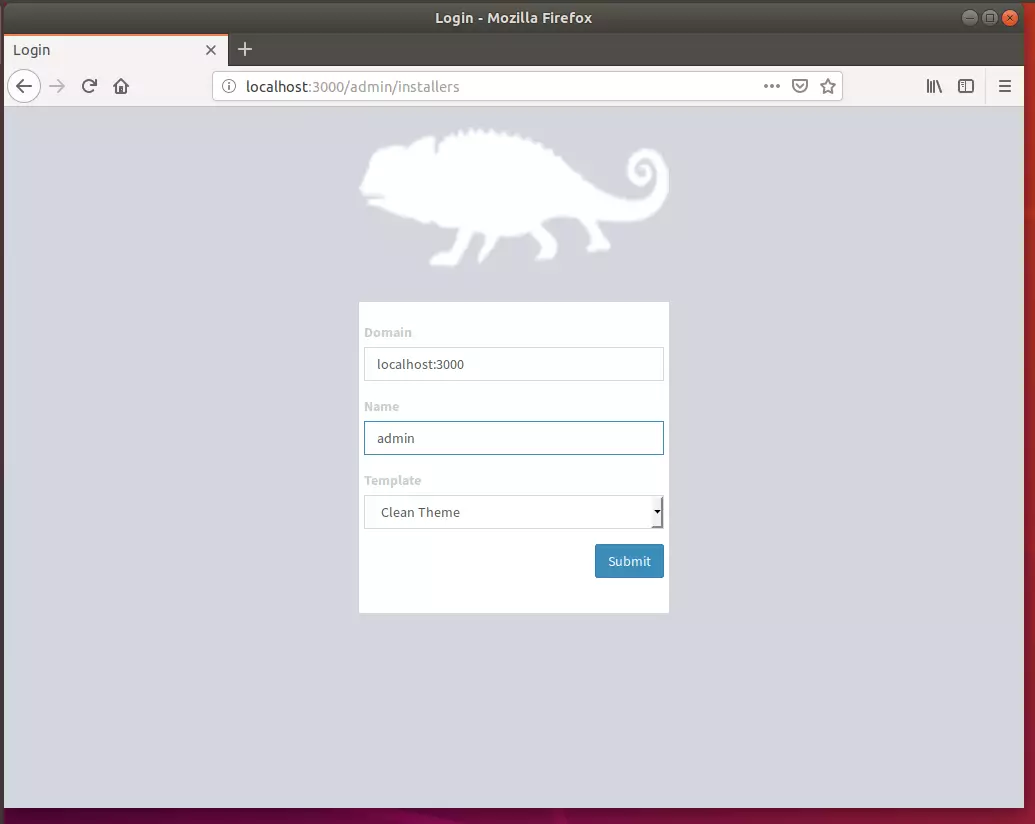This article explains how to install Camaleon CMS on Ubuntu Linux.
Camaleon CMS is an advanced content management system (CMS) based on Ruby on Rails that adapts to your needs. It makes developing and designing static websites easy and is the leading open-source CMS on the Ruby on Rails framework.
You can use Camaleon CMS to create your personal or business websites in minutes by creating markup pages and content. In addition, Camaleon CMS offers features that may not be available to other PHP-based CMS, like WordPress, Joomla, or Drupal.
You don’t have to worry about comments management and frequent updates. All you do is write your content, and it’s instantly published. Other features like permalinks, categories, pages, posts, and custom layouts are all top content and SEO friendly…
For more about Camaleon CMS, check its homepage.
These are the packages we’re going to set up.
- Ruby version 2.5.3
- Rails version 5.2.1
- MySQL Server
Install Ruby
You’ll need to install some dependencies to install Ruby and Rails on Ubuntu. To make that happen, install Node.js and Yarn repositories. This will make installing the dependencies easier.
First, install these curl and git packages.
sudo apt update sudo apt install curl git
Then, run the commands below to add Node.js and Yarn repositories and keys to your system. Then, install some core packages to get your environment going.
curl -sL https://deb.nodesource.com/setup_8.x | sudo -E bash - curl -sS https://dl.yarnpkg.com/debian/pubkey.gpg | sudo apt-key add - echo "deb https://dl.yarnpkg.com/debian/ stable main" | sudo tee /etc/apt/sources.list.d/yarn.list sudo apt-get update sudo apt-get install nodejs yarn zlib1g-dev build-essential libpq-dev libssl-dev libreadline-dev libyaml-dev libsqlite3-dev sqlite3 libxml2-dev libxslt1-dev libcurl4-openssl-dev libffi-dev
When you’re done, Continue below:
After adding the repositories and installing the necessary packages above, install Ruby with your local profile settings using rbenv. You’ll then use rbenv to install ruby-build.
cd ~/ git clone https://github.com/rbenv/rbenv.git ~/.rbenv echo 'export PATH="$HOME/.rbenv/bin:$PATH"' >> ~/.bashrc echo 'eval "$(rbenv init -)"' >> ~/.bashrc exec $SHELL git clone https://github.com/rbenv/ruby-build.git ~/.rbenv/plugins/ruby-build echo 'export PATH="$HOME/.rbenv/plugins/ruby-build/bin:$PATH"' >> ~/.bashrc exec $SHELL
After setting up your local profile, run the commands below to install Ruby version 2.5.3. If a newer version is available, replace the version number with that. Then, visit this site to find out about Ruby’s latest versions.
rbenv install 2.5.3 rbenv global 2.5.3
To verify that Ruby is installed, run the commands below:
ruby -v
You should see similar lines below:
ruby 2.5.3p105 (2018-10-18 revision 65156) [x86_64-linux]
Another package management you’ll want to install is bundler. to do that, run the commands below
gem install bundler
Now run the command below after installing the bundler.
rbenv rehash
Install MySQL Server
MySQL server can be installed on Ubuntu by running the commands below:
sudo apt-get install mysql-client mysql-server libmysqlclient-dev
Install Rails
Now that the Ruby environment is set up run the commands below to install Rails. Rails can be installed from Node.Js. First, run the commands below to install the Node.js repository, then install the Node.js package.
curl -sL https://deb.nodesource.com/setup_8.x | sudo -E bash - sudo apt-get install -y nodejs
Now that Node.js is installed run the commands below to install Rails.
gem install rails -v 5.2.1
Don’t forget to rehash your Rbenv environment and install new packages.
rbenv rehash
To verify if Rails is installed, run the commands below.
rails -v
You should see something similar to the lines below:
Rails 5.2.1
Also, in the past, we faced an RDoc bug; you should also update it. Also, install ImageMagick.
gem install rdoc brew install imagemagick
Install Camaleon CMS
Now that your environment is ready run the commands below to install Fae CMS and build your first site. Next, run the commands below.
rails new camaleon
Next, change it into the Fae CMS folder and install it there.
cd ~/camaleon
Then, run the commands to open the Gemfile there.
nano Gemfile
Please copy and paste the lines below into the file and save them when it opens.
gem "camaleon_cms", '>= 2.4.5' # (Current stable versions are 2.4.4.5, 2.4.3.10, 2.3.6, 2.2.1, 2.1.1) # OR # gem "camaleon_cms", github: 'owen2345/camaleon-cms' # latest development version # gem 'draper', '~> 3' # for Rails 5+
Then the file should look like this:
ruby '2.5.3'
#Fae CMS
gem "camaleon_cms", '>= 2.4.5' # (Current stable versions are 2.4.4.5, 2.4.3.10, 2.3.6, 2.2.1, 2.1.1)
# OR
# gem "camaleon_cms", github: 'owen2345/camaleon-cms' # latest development version
# gem 'draper', '~> 3' # for Rails 5+
# Bundle edge Rails instead: gem 'rails', github: 'rails/rails'
gem 'rails', '~> 5.2.1'
# Use sqlite3 as the database for Active Record
gem 'sqlite3'
Save and exit.
After that, run the commands below:
bundle update bundle install
After a while, the necessary packages should be installed. When you’re done, run the commands below to create an admin user and install CMS.
You will be prompted to create an admin email address and a password.
rails generate camaleon_cms:install
Create database structure
rake camaleon_cms:generate_migrations # before running migrations you can customize copied migration files rake db:migrate
Finally, run the commands below to start the server.
rails server
You should see Camaleon CMS’s home page.
Log on to the backend using the admin address and password.
http://localhost:3000/

Congratulation! You have successfully installed the Camaleon CMS platform on Ubuntu 16.04 | 18.04 | 18.10
You may also like the post below:

Leave a Reply